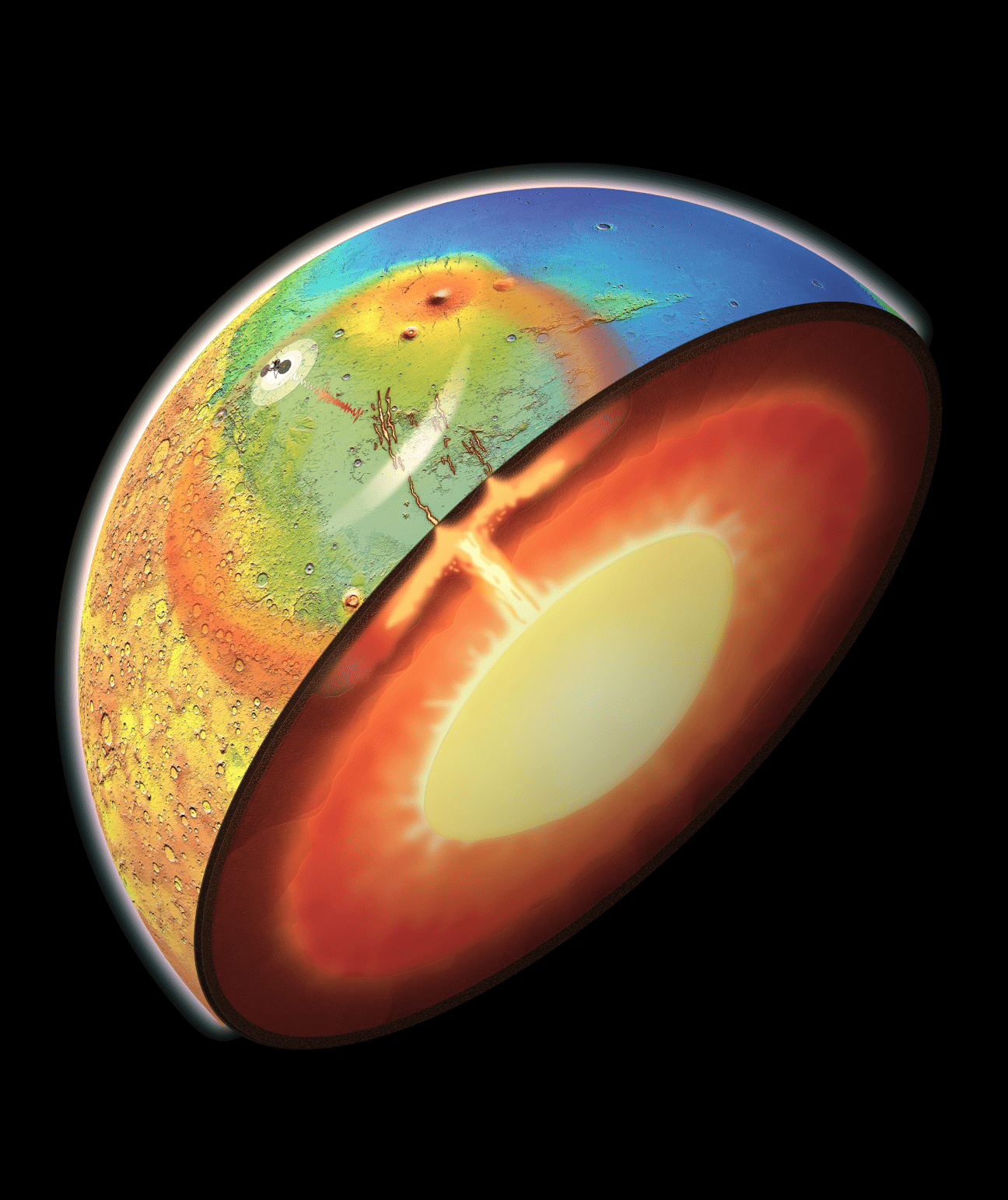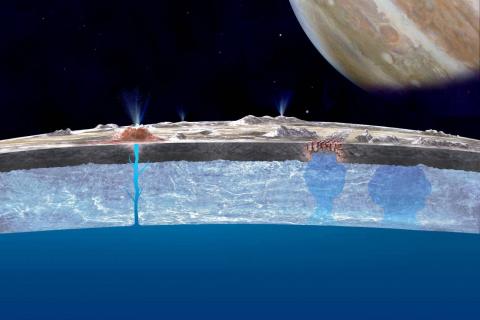Reaction to the discovery of an active mantle plume on Mars
A study published in the journal Nature Astronomy suggests the existence of an active mantle plume on Mars - a column of material from the mantle that generates hot spots - with a diameter of about 4,000 kilometres, which would explain its geological activity. The planet was traditionally considered to be geologically inert at present.

Artist's impression of an active mantle plume rising from the depths of Mars and pushing towards Elysium Planitia, a northern plain of the planet. The volcanism in Elysium Planitia originates in the Cerberus Trenches (in red). Recently, the InSight module discovered that almost all Martian earthquakes arise from this region. Credit: Adrien Broquet and Audrey Lasbordes
Molina - Marte (EN)
Antonio Molina
Planetary geologist specialising in Mars in the Department of Planetology and Habitability at the Centre for Astrobiology (CAB)
In this paper, the authors present a series of observations that, although not necessarily separately, but taken together, point to the existence of an active mantle plume beneath Elysium Planitia (Mars). This would mean that Mars would not be the geologically "dead" planet it is currently assumed to be.
The study comes from the research team of J. C. Andrews-Hanna, who is a renowned planetary geophysicist at the University of Arizona. He has been involved in numerous high-impact papers over the past two decades and can be considered a leader in his field. The University of Arizona is a prestigious institution that led the Phoenix mission and instruments such as HiRISE and OSIRIS-REx, and has participated in many other space missions. The journal Nature Astronomy is certainly one of the most important.
Several recent papers by the same research group pointed to the existence of recent volcanism in the region. And previous independent studies have been pointing to the existence of such plumes in the present for years, but only on the basis of models.
Although data on the interior of Mars are still very limited and mostly indirect, the results of the only mission that has so far focused on its study (InSight, NASA) point to a greater than expected internal activity of the planet. The work itself points to the numerous seismic movements detected by the mission's seismometer as further evidence supporting its interpretation. However, neither this nor other evidence, such as comparisons with models, is irrefutable.
As the paper itself indicates, if so, InSight would be on top of this volcanic plume (an anomaly). This would mean that the use of its measurements to calculate crustal thickness at the planetary level (using its data as a calibration) could be compromised. But Mars being a geologically active planet could have many other implications, from astrological to issues that directly impact human exploration. A warmer subsurface, at least in this region of the planet, could be conducive to habitable conditions, but also have potential for building human habitats or even constructing geothermal stations. Of course, it could also pose an added risk for installations.
The results presented in the paper are only indirect measurements, interpretations and comparisons with models. Some of them, such as crater counting, are limited for use on Mars (as they are based on dating on the moon and extrapolated for Mars) and difficult to interpret (the paper details some of the possible sources of error). The age of other evidence presented, such as the presence of distensional faults, is very difficult to ensure that they are recent considering the potential for the surface of Mars to preserve its surface intact for hundreds of thousands of years. The location of Elysium Planitia is not exactly straightforward either, as it is affected by the Martian dichotomy and other volcanic zones such as Elysium Mons and Tharsis. Although the work seems to take all this into account, they are still points of uncertainty.
Broquet et al.
- Research article
- Peer reviewed



